By Daniel Dunaief
Sometimes, Jillian Scully isn’t sure whether she’s dreaming that she’s practicing or she’s awake and on the field.
That’s because the Miller Place High School senior spends so much time honing her technique and trying to increase the distance she can throw a shot put and discus.
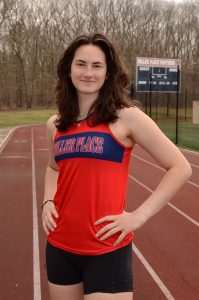
“I’ll have dreams where I’m practicing and it’s so vivid, I think I’m there,” said Scully. “I can feel the mud on my hands and the cold ball on my neck.”
The work has paid off, as Scully, who won the New York State Outdoor State Championship in shot put by over five feet in June, and set the school record in the shot put by over 12 feet, has been recruited by Division I track and field teams around the country, from UCLA to Arizona State, Colorado State University, and the University of Michigan, to name a few.
Two weeks ago, Scully and her parents James and Despina, (who goes by “Debbie,”) got up at 3 a.m. for a flight to Colorado, where they toured Colorado State University, and just last week, they visited the University of Michigan. On her college visits, coaches have given her tours of the campus and have outfitted her in university attire. Until she chooses a school, she can’t bring any of that clothing home.
“I’m expecting when I go to these schools that I’m going to have a gut feeling,” said Scully. I have a sense that I’ll know the best fit for me as soon as I step on [the right] campus.”
Scully, who is 6 feet, 1 inch tall, has found it tough to watch others train without being able to participate.
“It’s a little difficult seeing all the throwers getting to lift and throw and me being forced to watch,” Scully explained.
Scully explained that her favorite moment in a meet is when she takes her first step into the circle, which gives her a surge of confidence.
Each time she prepares to launch the ball or discus, things go “silent in my brain, the sound stops and I just throw,” she said.
A highly valued recruit, Scully started throwing shot put and discus in middle school. Ian Dowd, who coached track and field in middle school at Miller Place, recalled how Scully could sprint the fastest, jump the furthest and, as it turns out, throw a shot put remarkably far, without any training.
“She threw [the shot put] something crazy, like 25 or 26 feet, the first time she did,” said Dowd, who now coaches basketball in the Southampton School District.
Scully’s father James, who owns and runs the construction company JFS Contracting, dabbled in track when he was in high school, including throwing shot put.
“I never thought she’d have been that good,” Scully said. “I did it because I was bored and I wanted to do something.”
The younger Scully, however, who plans to study engineering when she’s not practicing or competing in Division 1 track meets, is focused and passionate about throwing the 8.8 pound shot put as well as the 2.2 pound discus.
While shorter than her 6’3” father, Scully is taller than her 5’8” mother, Debbie, who considers herself the “small one” in the house. Debbie has never tried either sport, but has picked up her daughter’s bag to move it in the house.
“It’s no wonder you’re so strong,” Scully told her daughter. “She’s walking around with a weighted vest all day long.”
Change of life
Before she discovered track and field, where she also runs the 4×100 relay, Scully, 17, was struggling.
Scully suggested that her mother gave her the “nudge” to try track.

“I was introduced to track at a certain point in my life when I was secluded from everybody,” said Scully, who was unreceptive to people and spent her free time playing video games or being unproductive.
“The person I was for however many years is not me,” Scully recalled. “I didn’t enjoy being that person.”
When she started competing in track, she felt the experience, including the camaraderie with her teammates, “clicked” and became “a part of me.” Spinning around in a small circle and throwing objects through the air became a necessary part of her mental health, and is a large part of her personality.
Hannah Kuemmel, the Athletic Trainer at Miller Place High School, has noticed the change in Scully.
“She is a lot more confident in who she is as a person and an athlete,” said Kuemmel, who also teaches a sports medicine class in which Scully sits front and center.
When she started competing in shot put and discus, she found a way to excel. “If I’m good, I might as well keep doing it,” she said. “I love it so much.”
Good isn’t the word Bill Hiney, her personal coach who has been working with her for over two years, and who has been in the field for 36 years, would use to describe her.
“I’ve often said she’s on another planet,” said Hiney, who is the Assistant Track and Field Coach during the winter and spring seasons for Southold High School.
A good female shot put thrower can reach the mid 30 feet. At 46 feet, 11 inches, Scully is throwing 10 feet further than the best female athlete Hiney has ever worked with, which puts her “in another dimension.”
Hiney describes her athletic student as the “icing on the cake in my long career. Coaches are lucky to have someone with athleticism, size and all the elements necessary to be extraordinary.”
Five squares
And, speaking of icing, the combination of her athletic training and metabolism make Scully a voracious eater, as she consumes five square meals a day.
She typically tops it off with a pint of Haagen Dazs mint chocolate chip ice cream in the evenings.
“She eats everything under the sun,” said her father, who adds that when he brings her 20 buffalo wings, she asks for another 20 so she can have a snack later.
These days, Scully, who coaches describe as tall and lean, puts her height to use in another sport, as she is an outside hitter for the varsity volleyball team, as well.
Scully’s parents appreciate how sports has given her the self-confidence and readiness to contribute to her team.
Even during track and field competitions, when she’s preparing to do her own throwing, Scully will speak with other athletes about their technique. “When Jillian was throwing against other girls, they asked her, ‘What can I do to throw better? What am I doing wrong?’” Jim Scully said. “She takes it upon herself to help all the other throwers,” and encourages them to improve.
Athletic trajectory
As well as Scully has performed in the shot put and discus, Hiney and the head coaches from universities around the country see continued growth ahead. Scully just started weight lifting this summer. “If it was karate, she’d be a white belt,” Hiney said. Well-known coaches in the field have come to watch her throw and have been impressed. Dowd believes Scully could reach an elite level if she keeps pushing herself, even climbing as far as the Olympics.
“I would love to see her with a US banner,” Dowd said. “That would be surreal.”
As for Scully’s thoughts on the matter, she would embrace an opportunity to represent her country at the Olympic games. She recalls sitting in class, and looking up how far Olympians, who competed in this past Paris Games, threw when they were her age.
“I’m trying to compare myself and set my goals,” she said. “That would be a dream for me, going to the Olympics and competing in these events.”




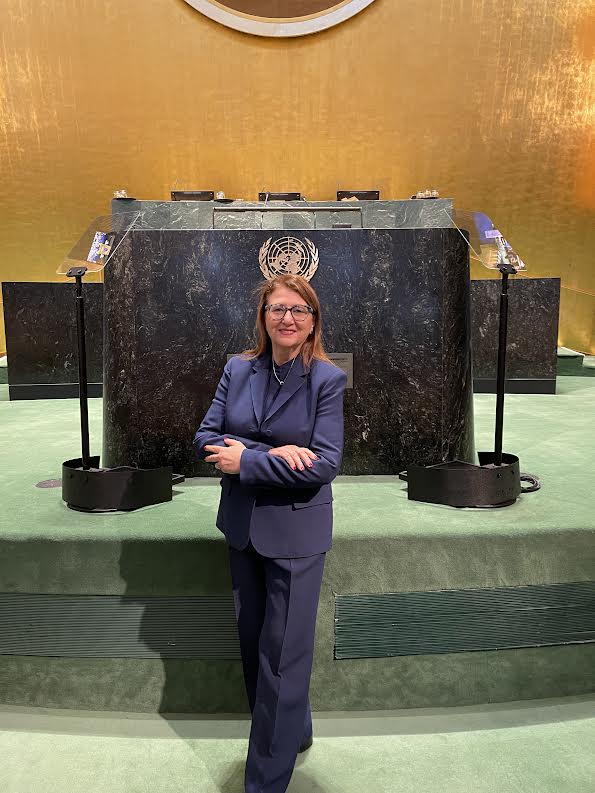





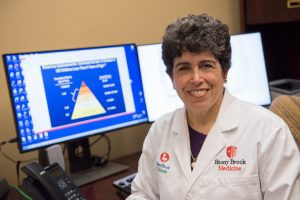
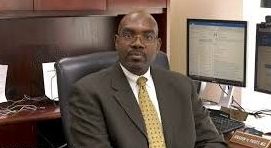


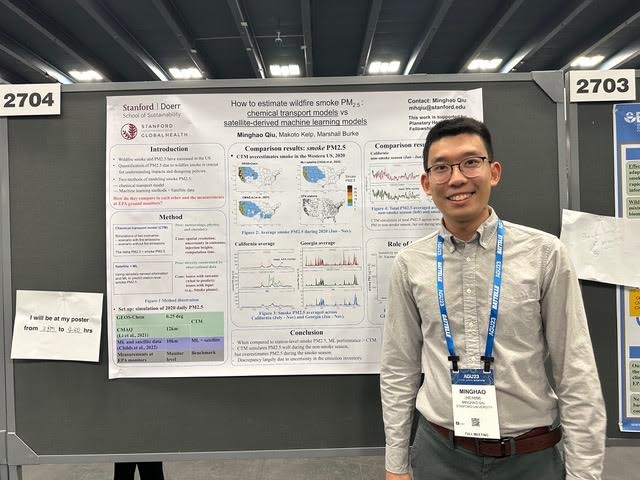
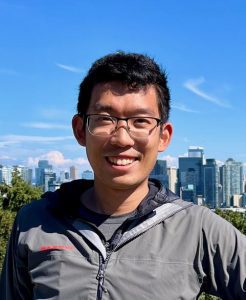


 He’s heard numerous stories from a day in which the comfortable, clear air provided an incongruous backdrop for the mass murders. He has heard about people who were blown out of the buiding amid a combustible blast and about how difficult it is to put out a cesium fire.
He’s heard numerous stories from a day in which the comfortable, clear air provided an incongruous backdrop for the mass murders. He has heard about people who were blown out of the buiding amid a combustible blast and about how difficult it is to put out a cesium fire.


